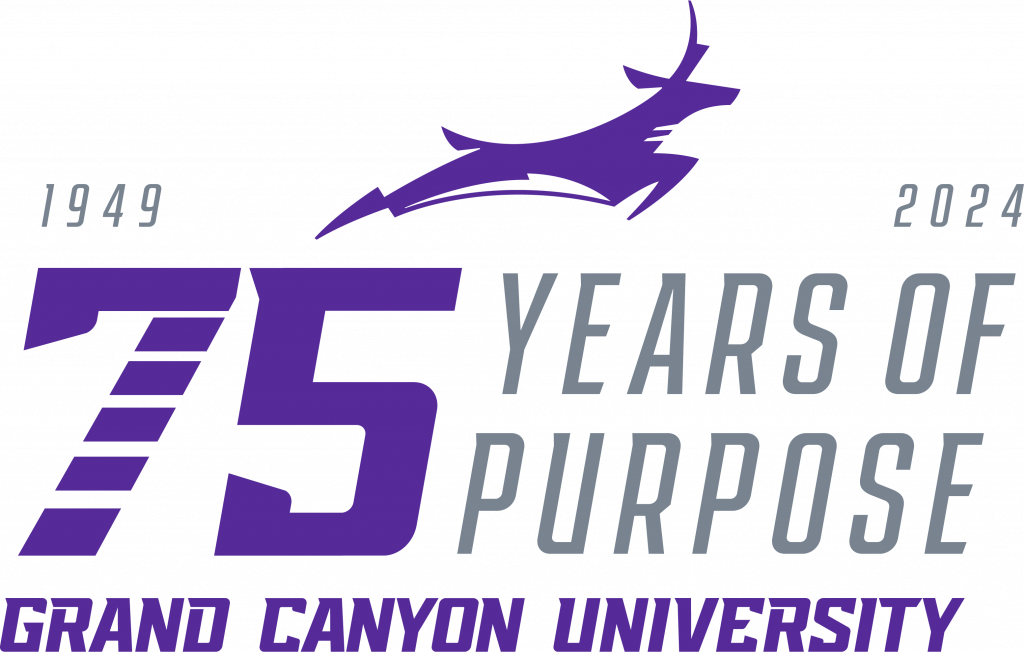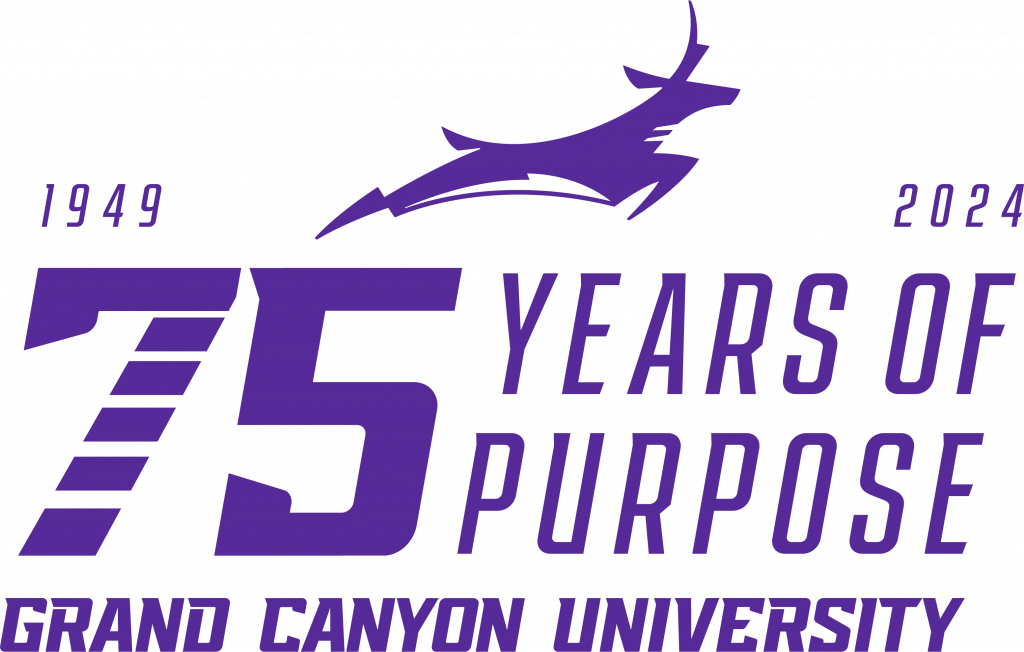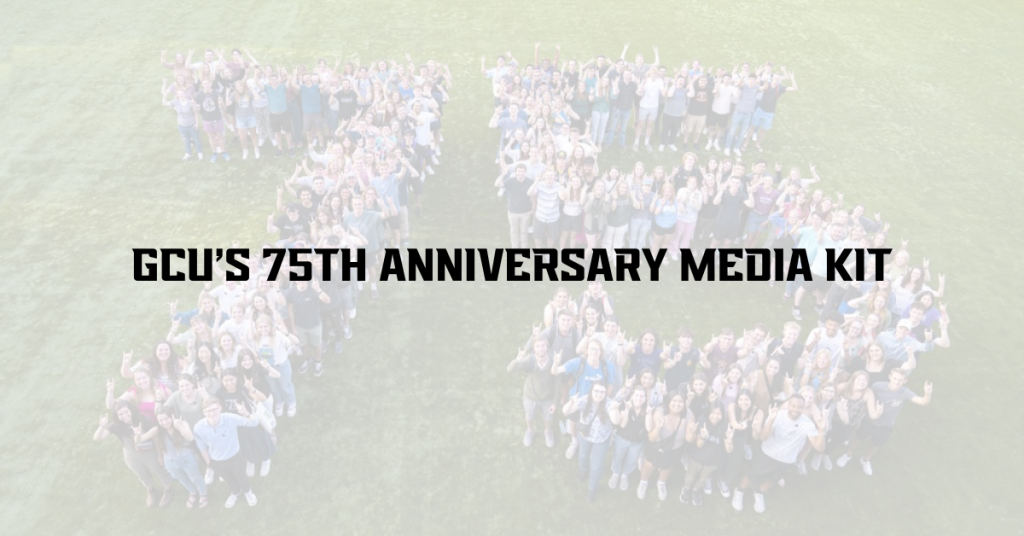
Grand Canyon University is celebrating its 75th anniversary this year! Founded in 1949, GCU went from being on the brink of closure in 2004 to the largest Christian university in the country. It’s a story of bucking the odds. Of investing in free market ideals. Of ensuring higher education is affordable to all socioeconomic classes. Of giving back to those who are less fortunate. And, mostly, it’s a story of faith.
75th Anniversary Logos
Video
In preparation for the 75th anniversary, GCU's Communications and Public Relations team complied photos and video of campus throughout the years. You will find downloadable photos below. For video, please email GCU's PR team.
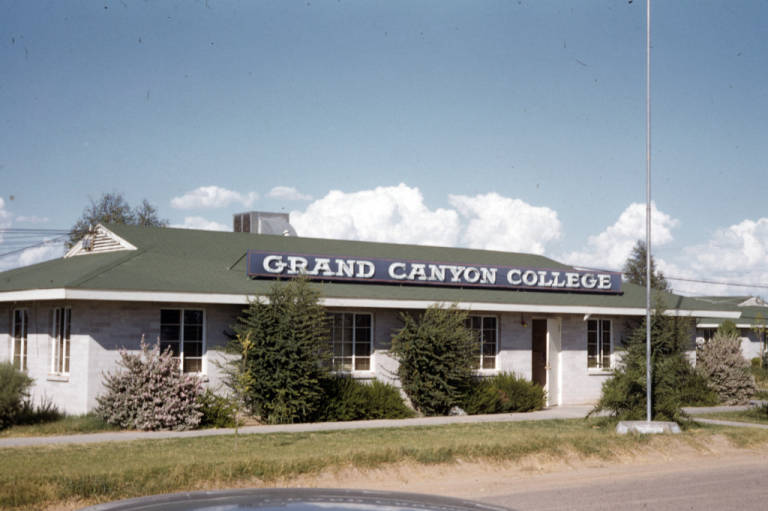
Then and Now Photos
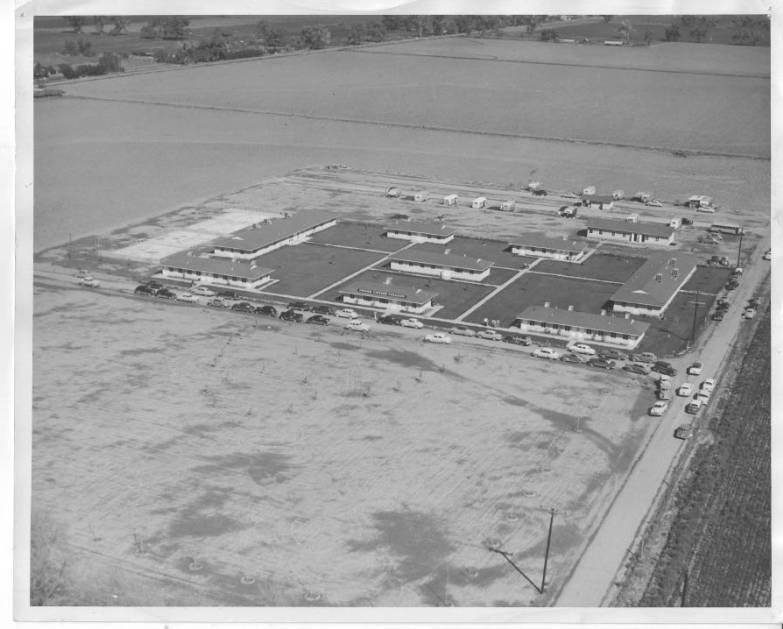
From 1951 to now, GCU’s campus has grown from nine modest buildings to a bustling campus of 32 residence halls, more than 30 dining options, and contemporary classrooms, labs and athletic facilities.
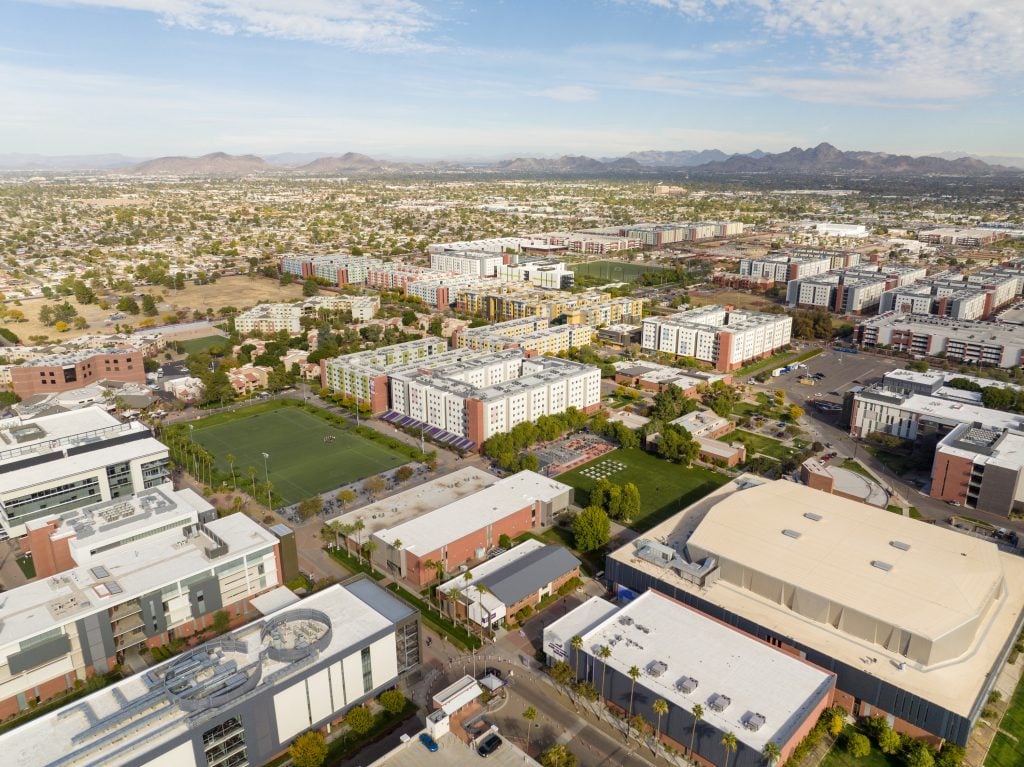
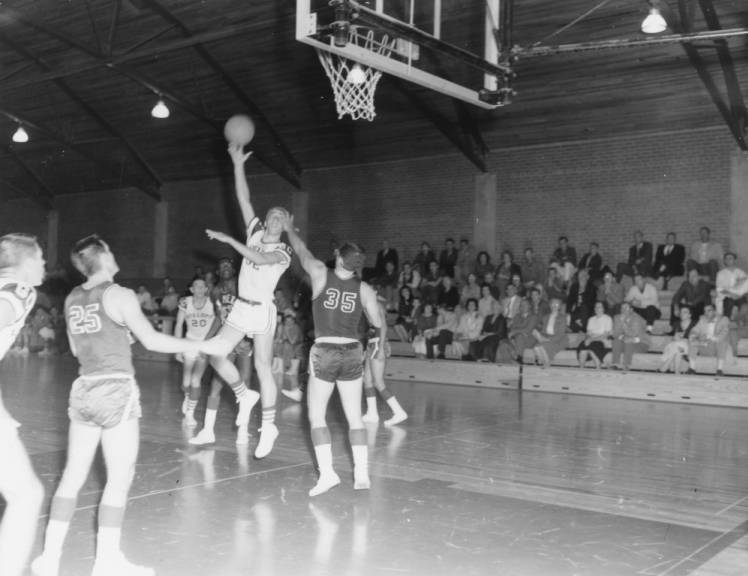
The evolution of GCU’s spirited fan base shows in these photos showcasing the 1962 men’s basketball team in front of a small crowd in Antelope Gymnasium and the 2023 team playing in front of a sold-out crowd in the 7,000-seat GCU Arena.
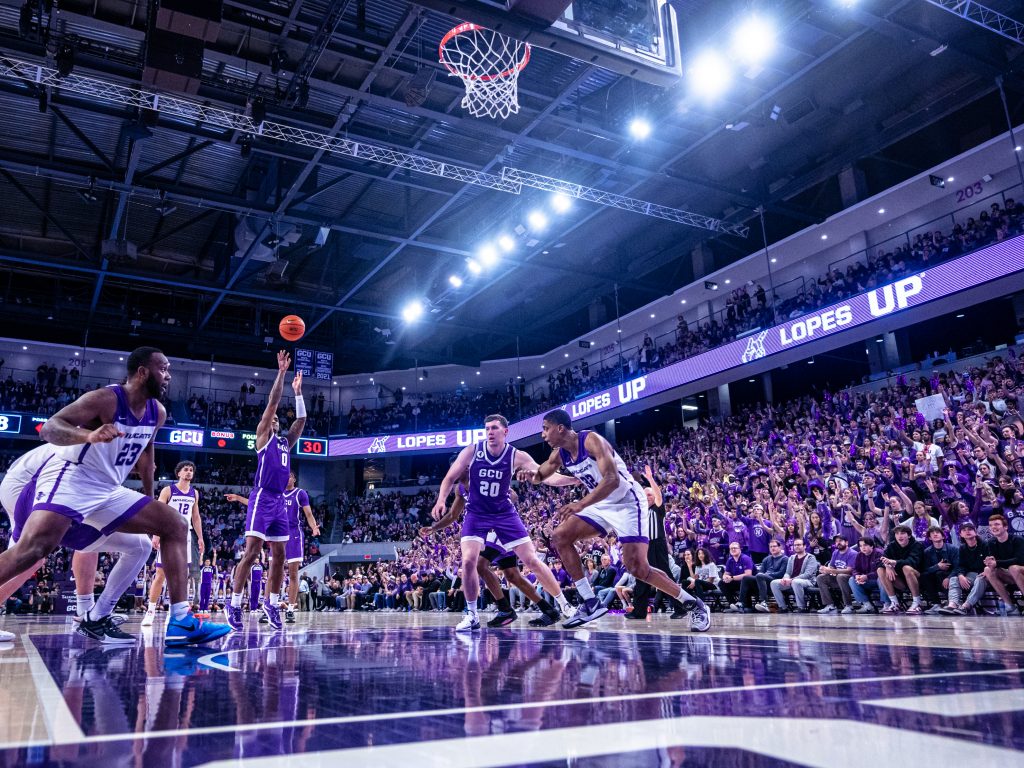
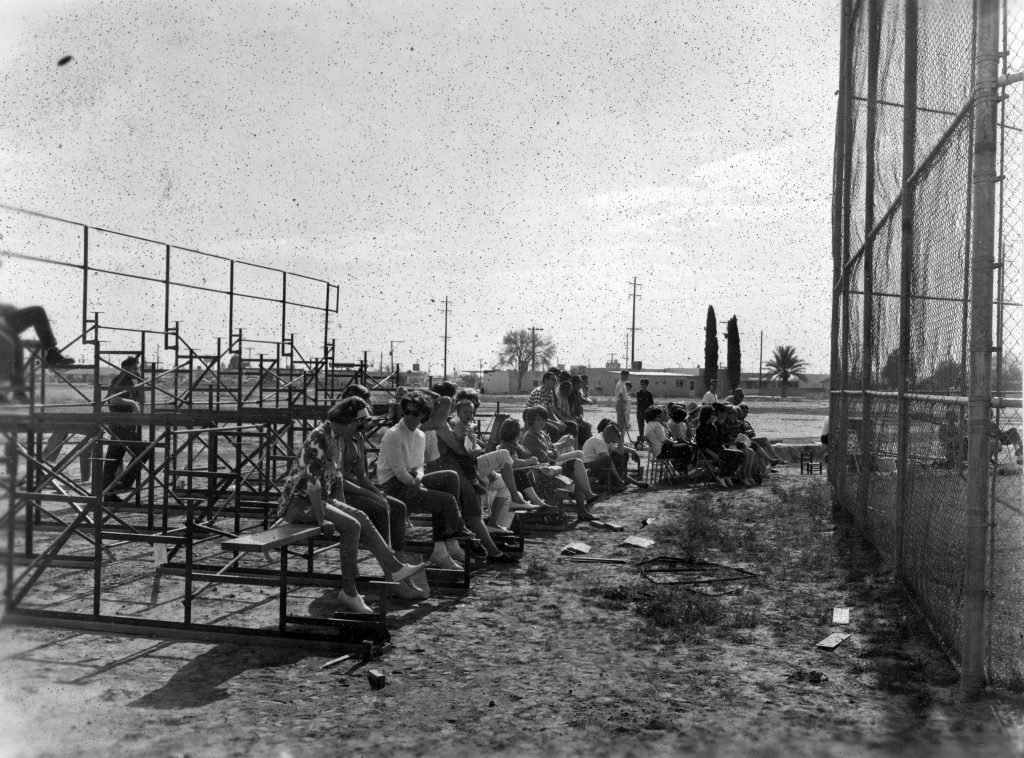
Brazell Field at GCU Ballpark has evolved from a few modest bleachers and chairs behind home plate in the 1960s to one of the West’s top collegiate baseball venues touting 4,000 chairback seats, a turf berm, a multiroom press box and contemporary sound system.
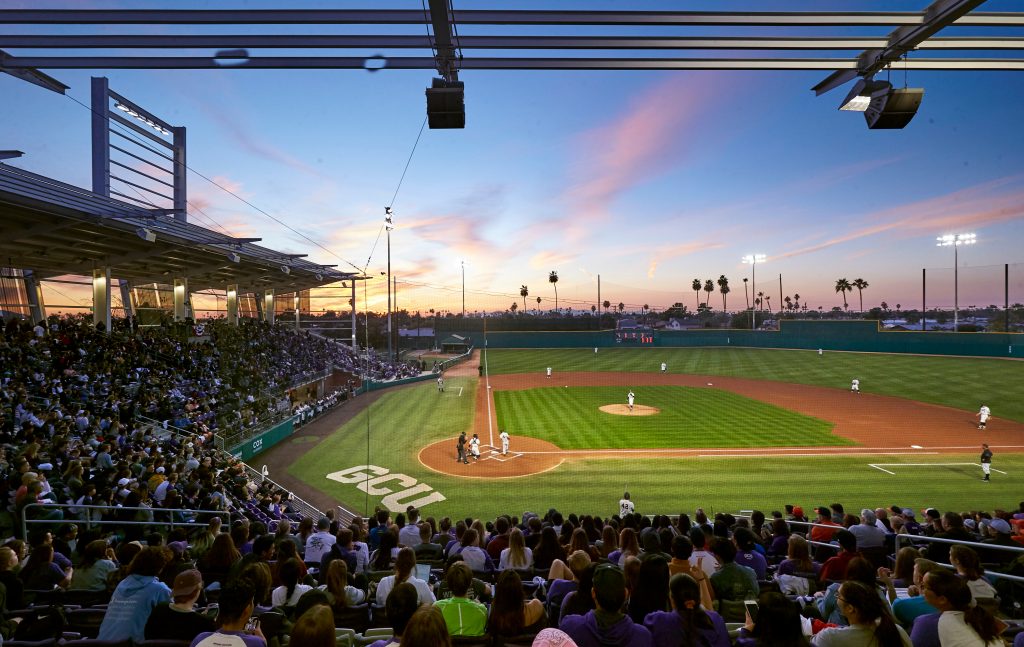
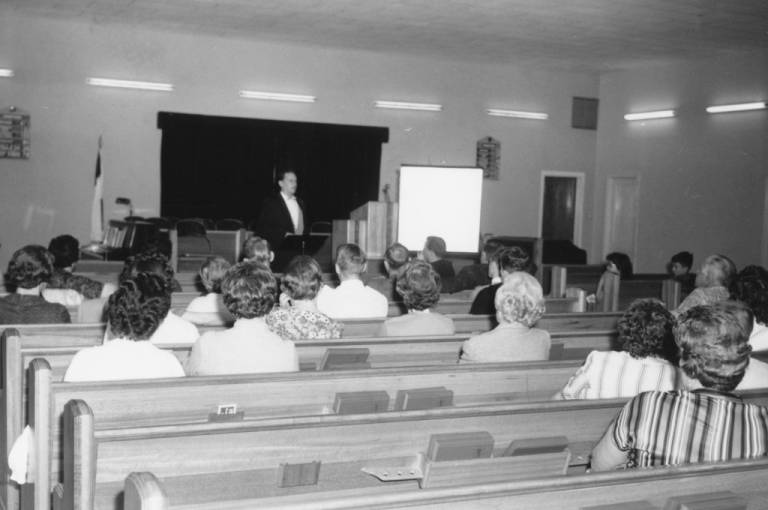
Chapel services have exploded from intimate gatherings in the 1960s to powerful worship and sermon ceremonies of 7,000 faithful students in GCU Arena.
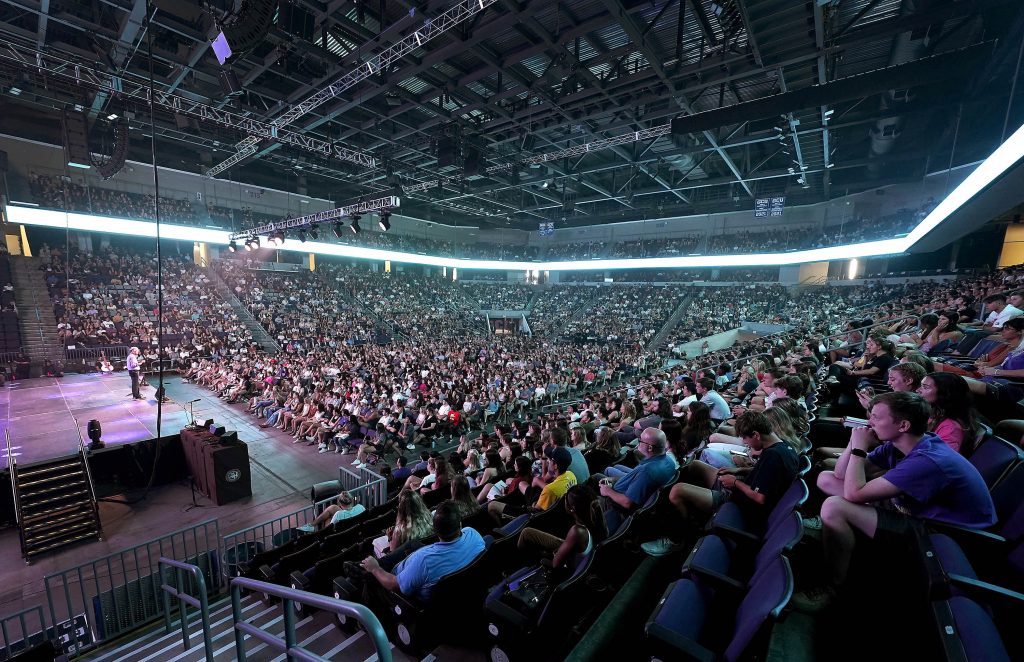
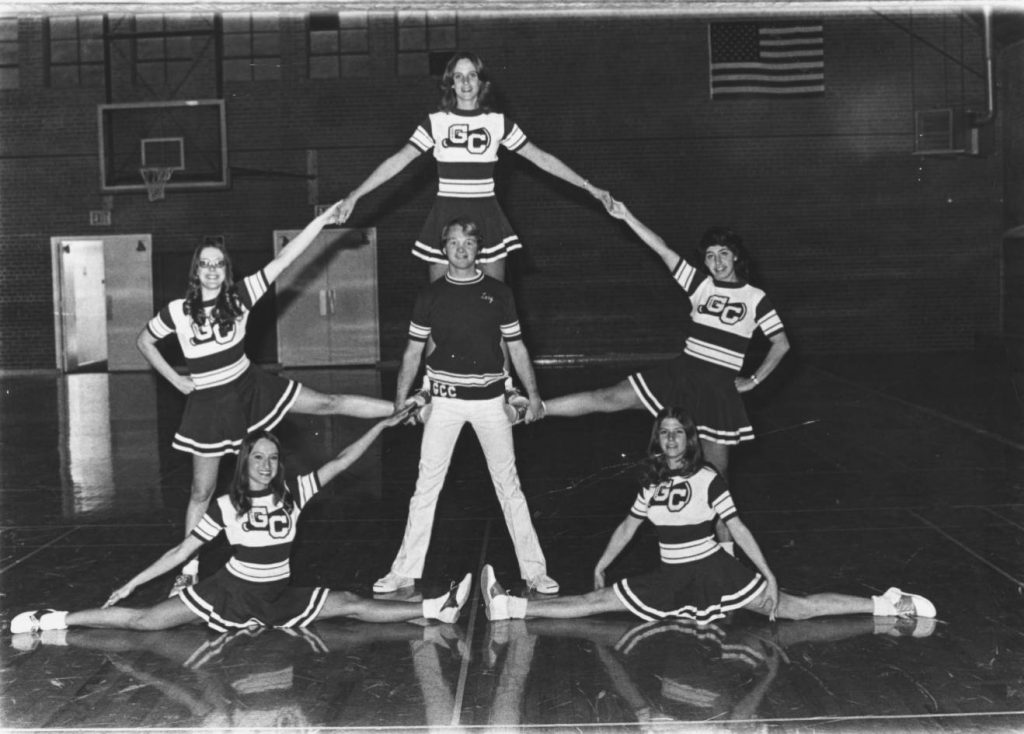
The crowds they cheer for may have grown exponentially, but the spirit and energy the GCU Cheerleaders bring have remained the same.
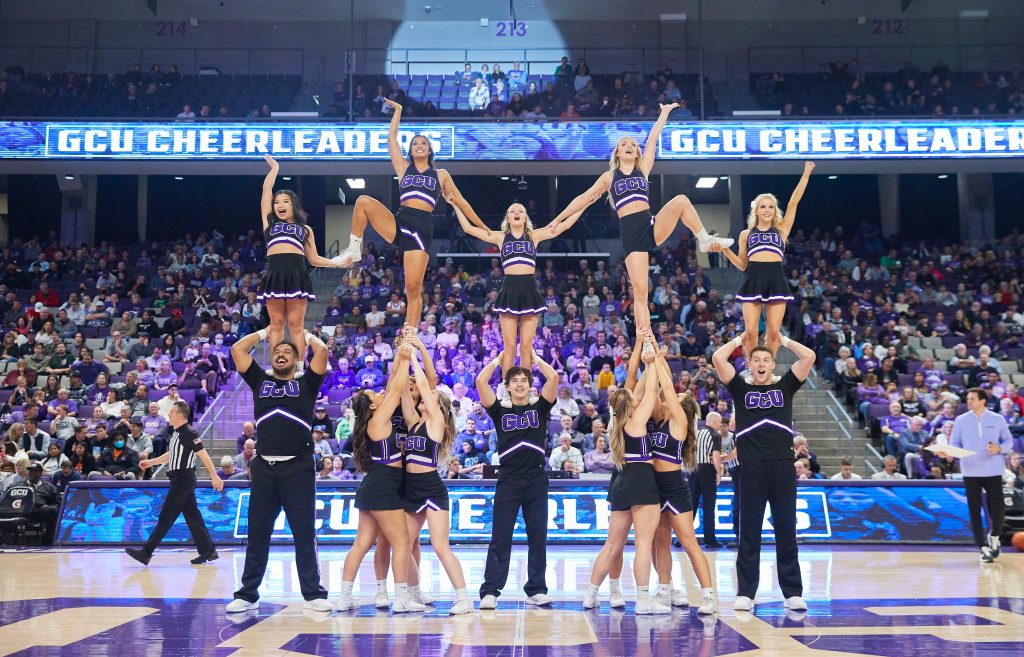
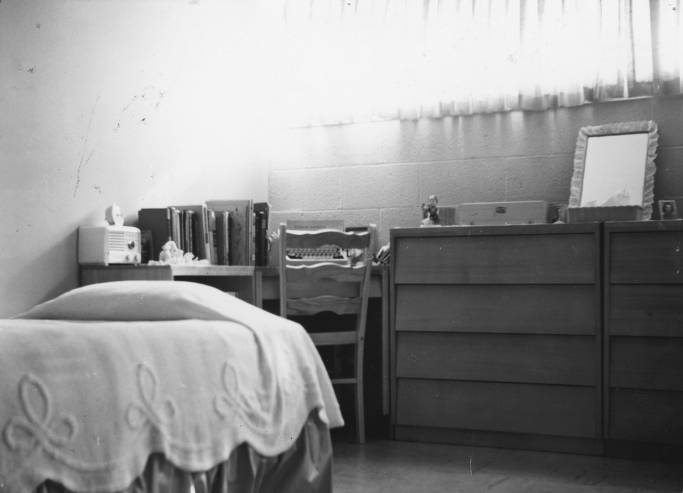
When GCU moved to the Valley of the Sun, only a handful of residence halls dotted campus. Now 32 span the university and are rated No. 5 out of 1,371 colleges in the country by niche.com
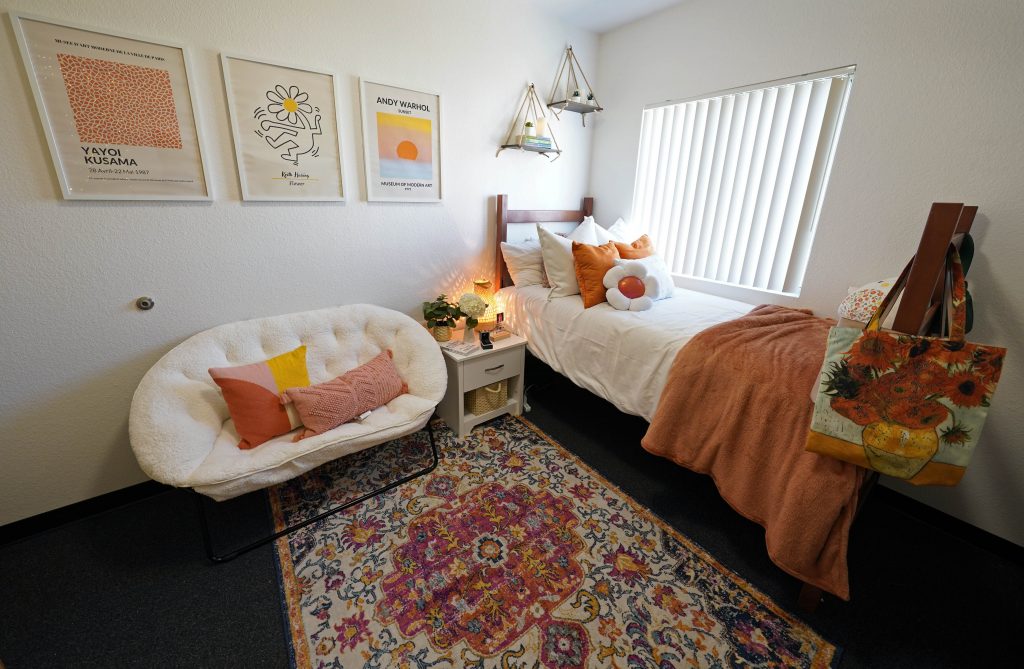
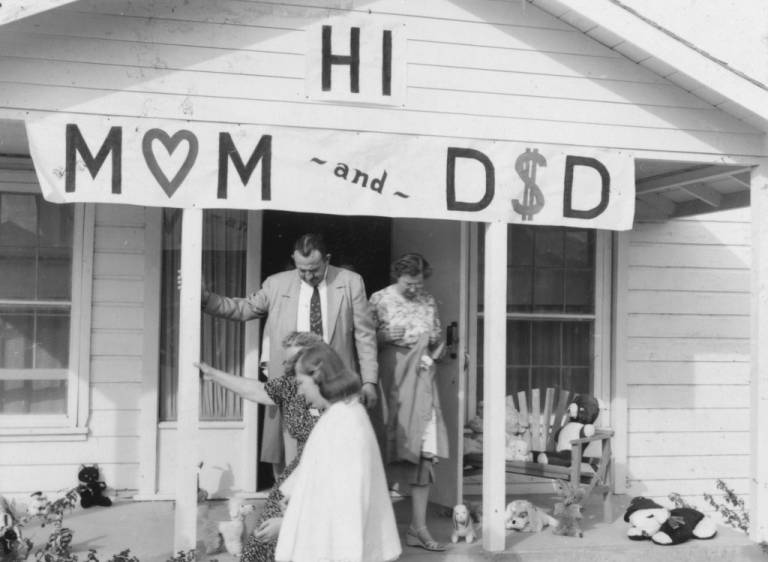
There’s nothing like Family Weekend at GCU! From the 1960s to now, families have been traveling to Phoenix from all over the country to visit and see what life is like on campus.
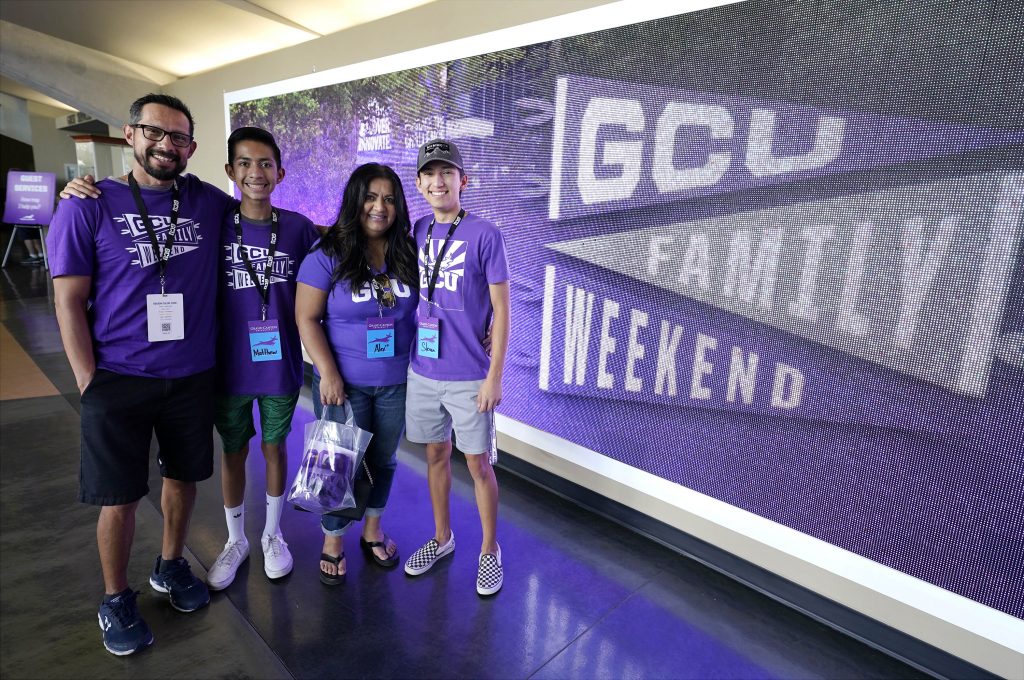
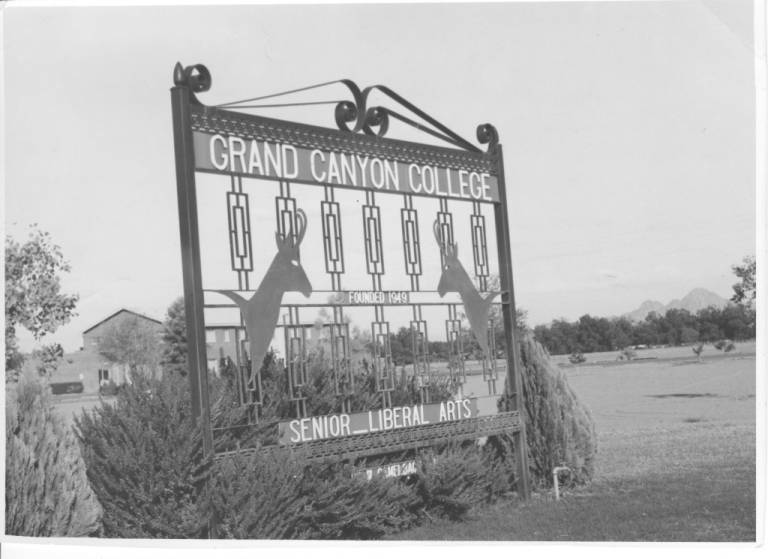
Featuring two antelopes, the front entrance sign that used to greet students, faculty and staff in the 1960s has evolved into a grand and expansive new entrance embodying the university’s growth, vision and welcoming spirit.
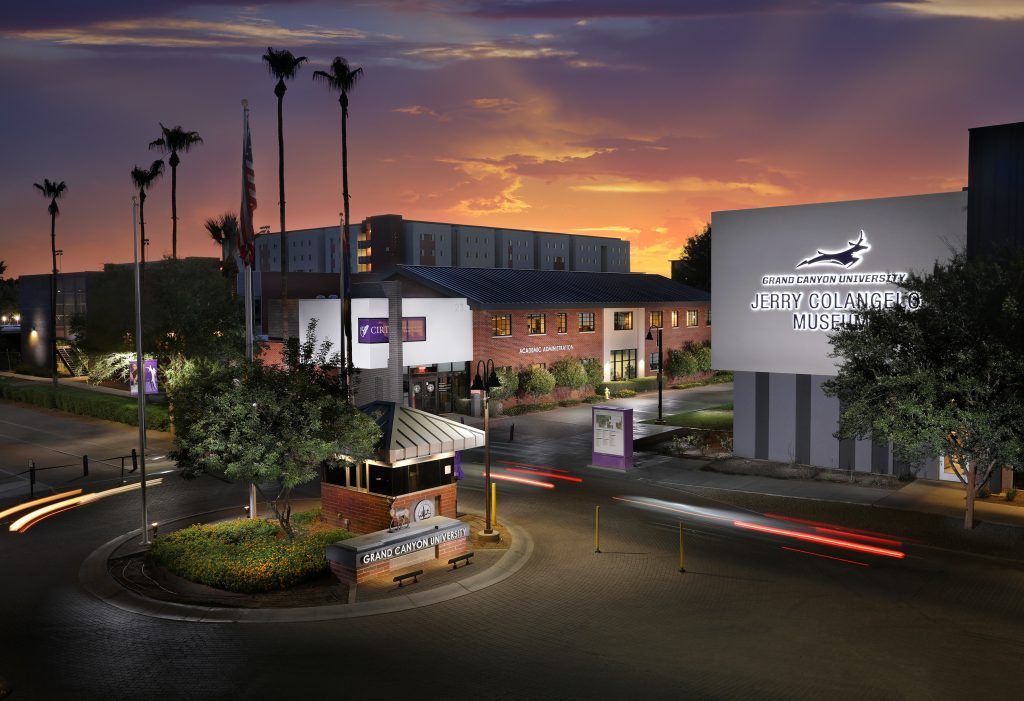
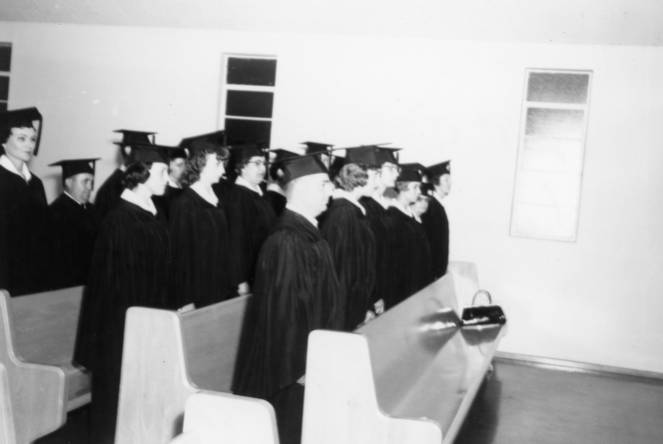
The humble commencement ceremonies of the 1960s have grown into a monumental spectacle, filling GCU Arena with new graduates and their proud families.
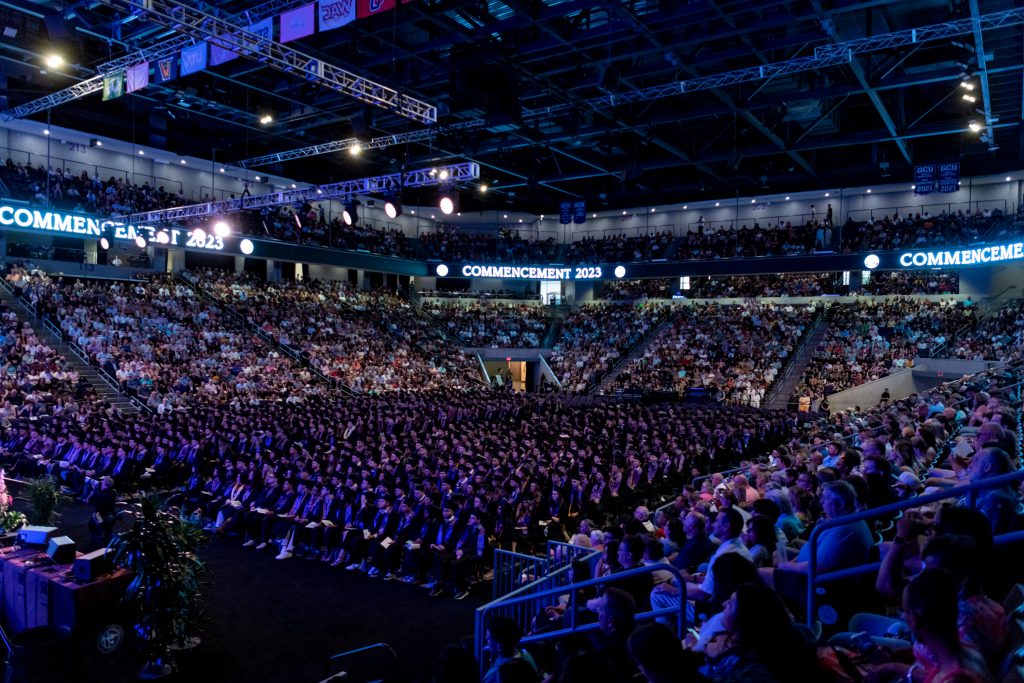
Did you know...?
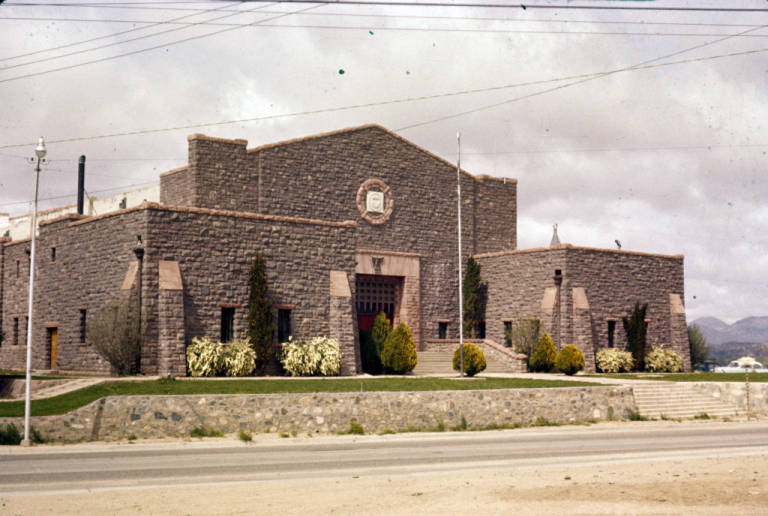
GCU was founded in 1949 in Prescott, AZ. Originally named Grand Canyon College, the institution welcomed 95 students that first semester. Students gathered in temporary classrooms at the Prescott National Guard Armory. Leadership realized that Prescott's job market could not support a growing student population and in 1951, moved the college to its current home in Phoenix.
In 1949, the first students voted on what they wanted the school’s nickname to be. It came down to the Antelopes and the Donkeys. Thankfully, the students picked the Antelopes.
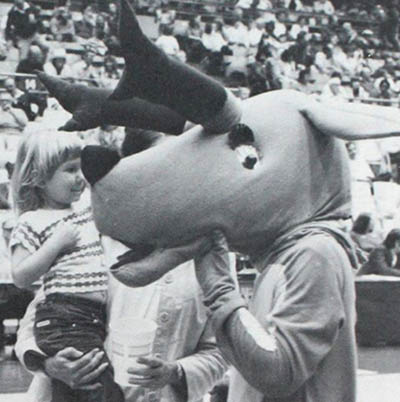
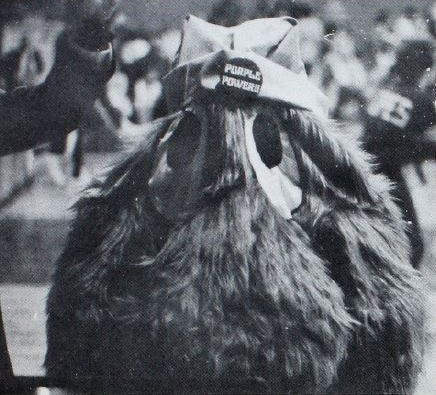
The name Thunder was chosen for GCU’s mascot due to the rumbling sound of an antelope herd migrating across the plains. In 1981, Thunder replaced the first mascot, a furry, purple blob called the Purple People Eater, who previously went by Andy the Antelope and Johnny Lope. Today’s fun-loving, athletic Thunder, officially named in 2008, wears a No. 49 jersey (for Grand Canyon’s founding year) and, of course, is “America’s Favorite Mascot.”
Grand Canyon College formed its first men’s basketball team in 1950. Under the coaching of Howard Mansfield, the team consisted of 10 students. Each of the student-athletes had jobs on top of their schooling, so practice was held in shifts. The team played eight games that season and lost every one of them. A hard loss, but it made the next season that much sweeter when the team won its first game. The campus was so ecstatic that the dean of students declared a campuswide holiday the next day.
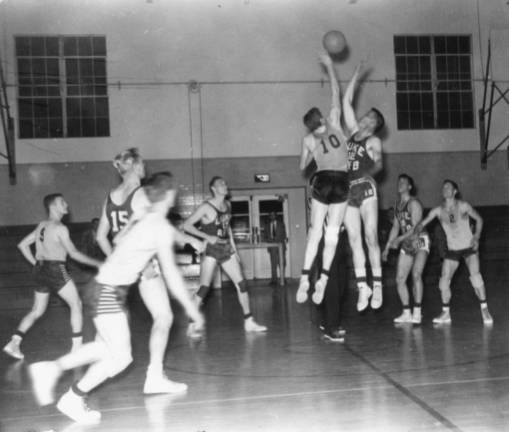
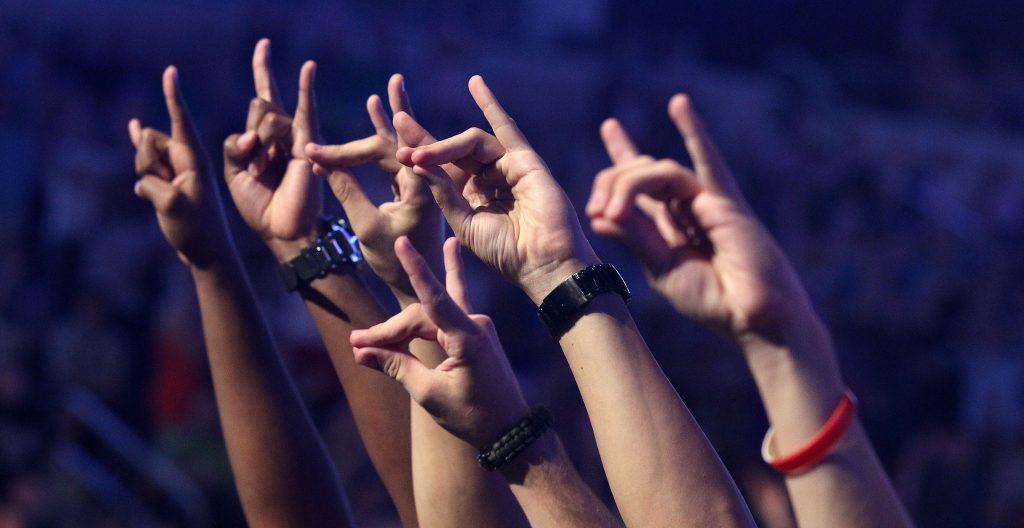
The Lopes Up hand symbol was created in 1996 by student Jim D'Apice, who felt the campus community needed a way to show its spirit. It was slow to catch on and didn’t really take off until 2009, when freshman Taylor Griffin approached the cheerleaders about starting a chant during free throws at basketball games. And thus the “1-2-3 Lopes Up!” chant was born.
Before they were a nationally recognized student section, one that fuels the biggest party in college basketball that we all know today, the Havocs looked a little different. In 2010, the small group was called the Canyon Crazies, and they would scream, chant and heckle from their seats in Antelope Gym, dubbed “The Black Hole.” When GCU’s new arena opened in 2012, the Crazies got a new name, the Monsoon. To prepare for GCU’s transition to Division I in the 2013-14 school year, former Director of Spirit Programs Emily Stephens put out a call to discuss starting a special section within the Monsoon. Only three students answered that call, one of whom was Justin Macari. He and Stephens decided that the entirety of the student section would still be called the Monsoon, but they would form an elite unit within that group, the Havocs. Later, that Havocs name was applied to the entire section in which every student is a Havoc. With Macari as the first Havocs president and Brandon Kaiser and Trevor Knotts as the first vice presidents, the group got to work recruiting. Their task? Must be willing to paint your body, hair and face, wear crazy costumes, chant and yell. Check, check and check.
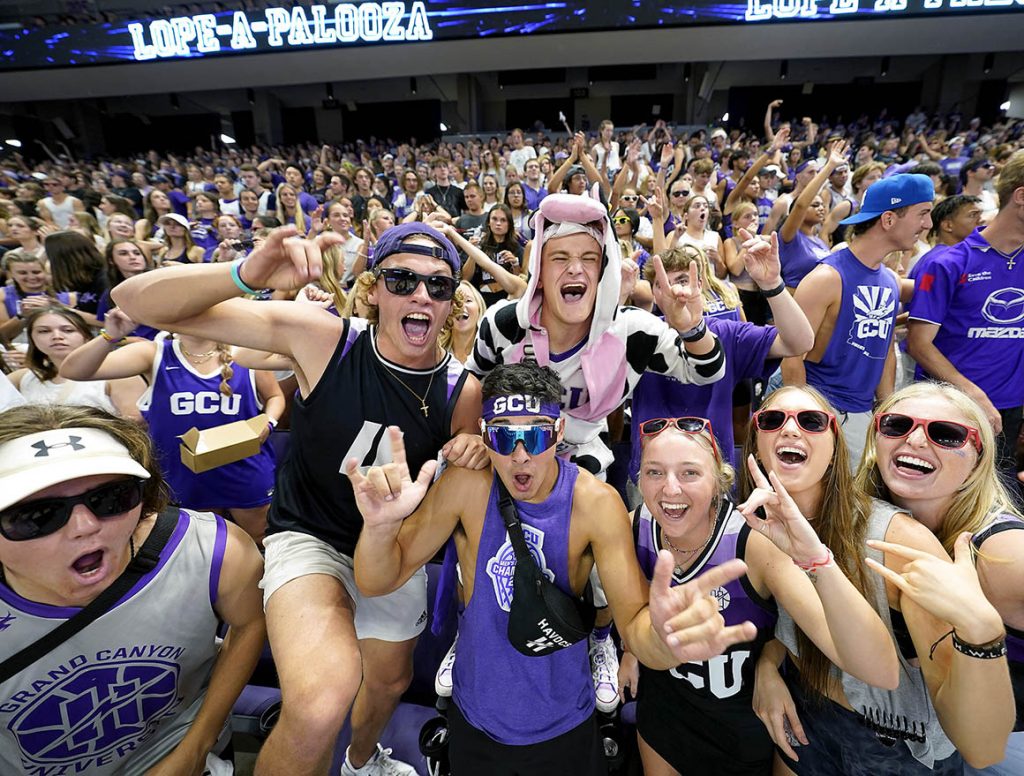
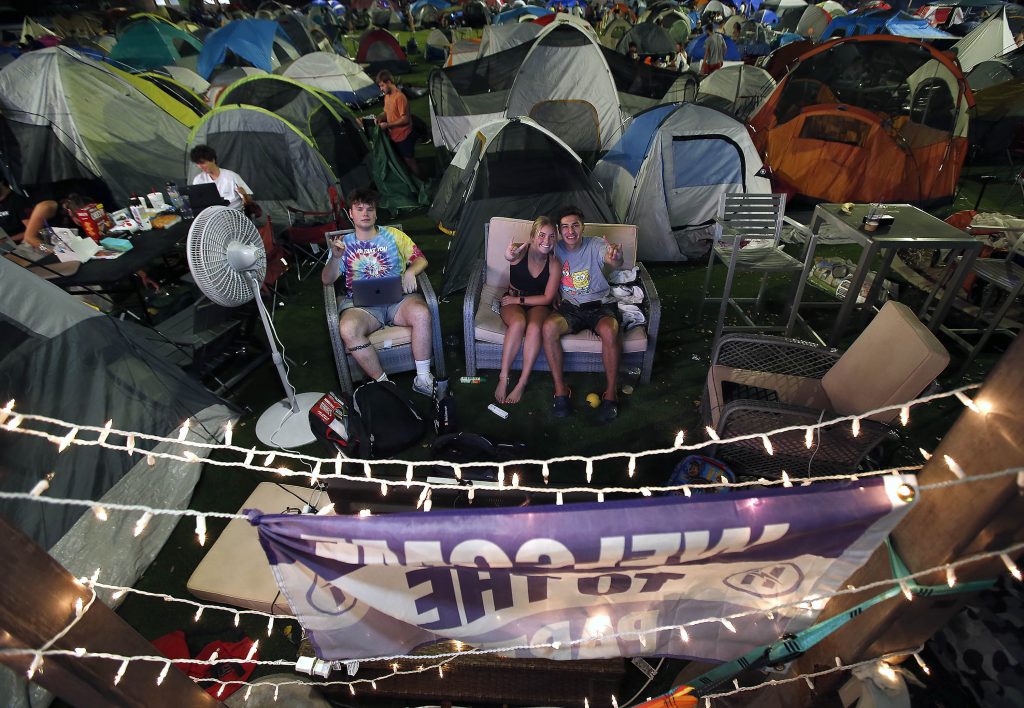
GCU students will camp out for anything. They pitch tents and hang hammocks in front of GCU Arena days beforehand to get premium spots in line for Midnight Madness, the first basketball game of the season, and games against key rivals or big-name opponents. Daniel Elliott started the tradition in 2015 – and Camp Elliott was born. It continues today, with the Havocs, GCU’s nationally renowned student cheer section, managing the spirited camp-out. The planned “glamping” community has included elaborate set-ups of kiddie pools, TVs, video games, board games and a visit by the men’s and women’s basketball teams, who deliver doughnuts or pizza. A particularly good year was before the pandemic in 2018, when 168 tents and 846 students took part (though in other years, estimates have reached up to 200 tents and 1,000 students). Havocs leader Jennifer Burke told the Glendale Star in 2019, “It’s part of what makes our school so unique. The players see how much effort we put into being there, and you can see they feed off of it, and hopefully it makes them better.”
A part of GCU's 75th anniversary commemorative book, GCU asked people for their thoughts on the university's history and impact
"This is an amazing story of leadership and teamwork in building a world class university and having billions of dollars in economic impact to the local economy. I am proud to be associated with this institution."
Jerry Colangelo, advisor to GCU and the godfather of professional sports in Arizona as the former owner of the Phoenix Suns and Arizona Diamondbacks and director of USA Basketball.
"This is a true Arizona success story...In the private sector, we have a saying that when government gets out of the way and lets innovation do its work, we see business models that are transformative – and and in this case of GCU, very unique as well"
Former Arizona Governor Doug Ducey at a ceremony celebrating opening of GCU's commercial hub at 27th Avenue and Camelback Road.
"GCU's desire to be a business with a higher purpose is embodied from the top leadership down, and we are honored to have GCU as one of our largest, most impactful and longstanding partners."
Jason Barlow, President and CEO of Habitat for Humanity Central Arizona
"What a success story this university is and continues to be. GCU's impact in the innovation of higher education and how it can bring change is a model for all of us to learn from...I love the attitude of all at GCU that 'if it is needed, we can find a way to make it happen!'"
Dean Barrett, retired Senior VP of Global Marketing at McDonalds and GCU advisory board member

